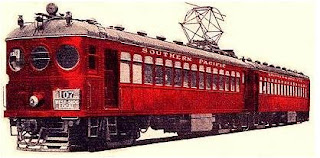Chase: Too big to succeed in Hillsdale?

Last night’s Hillsdale Neighborhood Association meeting (above) bored in on Chase Bank’s efforts to build a branch in Hillsdale.
Three Chase representatives present got an earful. Indeed, throughout the day in various conferences and meetings, the Chase reps heard why Hillsdale isn’t exactly welcoming the big bank’s plan with open arms.
“You kind of caught us off-guard,” said Chase VP Greta Pass.
And therein lies the problem.
Will the Chase bureaucracy and line-of-command be able to respond to what the bank’s little delegation learned on their visit?
The fact is that Chase is up against a seasoned, savvy group of local folks, several of whom are no strangers to land-use law in Oregon.
Many have been devoted to planning Hillsdale’s future for two decades.
As they see it, Chase, which carries a lot of baggage to begin with, has acted as if Hillsdale were some sleepy, rube-inhabited burg.
With no advance word to anyone in the community, the bank is asking the City for an “adjustment” in the zoning that the local group helped hammer out 15 years ago. Chase wants approval for a building less than half the size required by zoning.
The reason? More parking for home-bound commuters.
But several Hillsdale plans (and there have been at least four) have noted that Hillsdale is a transit district (with seven bus lines) that should invite bus riders, not more cars. It is also a pedestrian district that sorely needs more and better sidewalks and pedestrian connections between businesses on the north side of Capitol Highway, where the bank wants to be.
Planning documents also call for higher density next to the bus lines. Accordingly, they recommend mixed-use buildings of more than one story.
Either Chase officials didn’t read the plans or ignored them. Chase wants one use (a bank, even though two others are just feet away.) It also wants a single story.
A Wall Street outfit of this size is apparently use to ram-rodding its proposals through planning agency bureaucracies. Why scope out the community in advance?
So Chase is off to a bad start.
The question now is whether this big corporate ship wants to change direction in the suddenly choppy waters of Hillsdale.
The HNA last night asked Chase to delay its “adjustment” filing for two months. The Chase delegation said they would have to take the request to “superiors.” Not a good sign.
But it’s a start. If the superiors turn out to be truly superior they will accept the recommendation. If they don’t, HNA has vowed to oppose the “adjustment” request.
Assuming Chase higher-ups agree to the delay, both the bank and the community need to use those two months to sit down and come up with a project that both sides can accept.
It’s a great opportunity for Chase to craft a “Hillsdale Initiative” that can be replicated throughout Oregon, where the bank wants to build three or four dozen branches in the next few years.
As Chase’s Greta Pass told the group last night, Chase considers itself “under-branched” in Oregon compared to its competition.
She also told the group that her bank wants to be a “good neighbor.” Whether Chase is seen as “good neighbors” on ribbon-cutting day and those that follow, depends on what Chase does now — long before ground is broken for construction.
Will Chase suddenly be able to “act small” the way competitors like Umpqua and a few other banks and credit unions do in Portland?
Or is Chase simply too big to succeed in Hillsdale?
Labels: Chase Bank, Hillsdale, JPMorgan Chase


2 Comments:
"Too big to succeed" here? No wonder we have such a high unemploment rate when w`ere so undfriendly to bussiness that create jobs.
Thank you, anonymous. Please use your name in the future. My name is Rick. What's yours?)
You have raised an important and timely point about job creation. I will use it in future discussions. Here's where it takes me.
According to Chase, this branch would employ five people.
The building would be less than half the size of the one allowed by zoning. Less space, fewer employees.
The proposal that many of us seek would attract from three to four businesses. Presumably each would minimally employ two or three persons, for a total ranging from six to 12 and perhaps more.
Then there is the question of whether Chase would keep our money in our community where it would build jobs here. Or, as has been its practice, will the bank drain our deposits off into some toxic, unregulated "financial instrument" that destroys financing of future projects or is invested overseas.
You have reminded us that both the opponents of this particular proposal and Chase must work together to come up with a plan that maximizes job creation.
Thank you for broadening our discussion and objectives.
Post a Comment
Subscribe to Post Comments [Atom]
<< Home